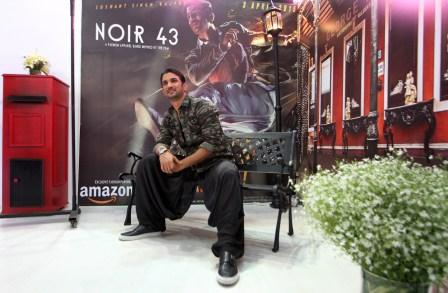
Preppy? Hipster? Lumbersexual? The fashion industry is always coming up with new categories to define the look of the week or month. Across India’s decidedly urban fashionscape, the millennial consumer isn’t one to gobble up what the Western media throws at them. They are more prone to interpreting a look their own way than imitating a defined style.
Abhishek Maan, a 25-year-old engineering graduate and theatre artist from Delhi, wears a man bun and shaved sides with a mountain man beard but wouldn’t be seen in the tank tops or plaid shirts and skinny jeans his hipster to lumbersexual appearance would call for. Instead, he prefers superhero graphic tees under sheer muslin, embroidered Lucknowi kurtas and chinos. “I know my hairstyle and beard would have people assume ideas about not only the kind of person I am but what my wardrobe should look like,” he says. “Guess what, I don’t have to look like something predictable you can hashtag.”
A personal statement
Mumbai-based fashion stylist and consultant Sohiny Das shares this viewpoint. “What is heartening to see is the growing realisation that trends need not be mindlessly replicated,” she says. “Instead, people are putting individual spins and local twists on popular styles.
“There is a greater consciousness regarding Indian textiles, craft and ethnic jewellery, and it is good to see that we are taking pride in the indigenous, subtly weaving it into our daily attires. Thankfully, the previously distinct demarcations between Indian and Western are starting to blur, and that, for me, is the current highlight.”
Das believes the harbinger of this phenomenon may be the fact that social media keeps Generation Y up to date on the international fashion scene. But there is a kind of millennial consumer who is smarter and knows better than to blindly imitate the latest styles. As a result, the look du jour can be defined as a personalised version of a current Western aesthetic with an accent of individualistic elements.
“There was a time when all Delhi girls were stepping out in LBDs, but even in that era of mourning clones you saw variations everywhere,” says Delhi-based image consultant Richa Dogra.
“What’s important is that each category, like preppy, hipster or what-have-you, is already an open one and women especially are less concerned today about looking exactly like lookbook models.”
Dogra adds that these categories can incorporate many different looks under their rubric, and improvisation and extensions will not dilute their essence.
Freelance style consultant Asish Samanta from Mumbai highlights two aspects of millennial style. Firstly, consumers tend to buy high-street brands such as Zara and Benetton and their look is determined by what’s on the racks. Secondly, casual wear has become all-pervasive thanks to the start-up culture idolising kings of casual like Mark Zuckerburg. In this scenario, preppy, sporty and holidaywear are still major looks.
What’s in store?
“Brands are still playing it safe,” says Samanta. “Thanks to competition from ecommerce sites you get to see interesting and quirky pieces like drop-crotch pants in stores, but overall they play it safe and don’t really think out of the box.”
Shikha Jain, a 23-year-old postgraduate student from Delhi, isn’t too concerned about how only a few categories make their way into stores, but she’s not entirely happy. “Not so long ago, my Instagram feed was buzzing with ‘normcore’,” she says. “It’s not rocket science to put sneakers, leggings and a jumper together but when I walk into a store and see that already draped on a mannequin, it seems they’re trying to shove down my throat what kids online have already ironically laughed at and celebrated.
“If I want to do my own interpretation of normcore, then I will hunt for the right high-waist jeans and cropped trench coat. Let me enjoy that process.”
Jain’s attitude reflects the millennial drive towards a sense of ownership and individuality for one’s style. It seems that international brands available in India and those looking to enter the market will have to walk a tight rope to impress the youthful consumer who knows exactly how (s)he wants to dress.









